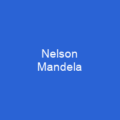Johannesburg: A City of Gold and Dreams
History and Discovery
Imagine a city that was born out of the golden dreams of men, a place where the earth itself seemed to shimmer with untold riches. Could it be that Johannesburg’s name came from Jan, Johan or Johannes? The story of this megacity is as rich and complex as its history. In 1884, the Witwatersrand gold reef was discovered on a farm called Vogelstruisfontein by Jan Gerritse Bantjes. This discovery set off a rush that would change the course of South African history.
The Witwatersrand Gold Rush transformed Johannesburg from a small mining camp into a bustling metropolis in just ten years, with 100,000 people calling it home by 1896. The city’s name is still disputed among historians, but one thing is certain: the discovery of gold made Johannesburg the epicentre of South African wealth and international trade.
Urban Growth and Development
Johannesburg has grown to become a global city, hosting major events like the FIFA World Cup. The city’s population surged from 4,803,262 in 2019 to over 7 million when including its metropolitan area. This growth is not just numerical; it’s a story of transformation and resilience.
The city has faced numerous challenges, such as apartheid and the subsequent economic boom that brought new life to areas like Sandton City. Today, Johannesburg stands as a testament to human ingenuity and perseverance, with iconic buildings like Rand Steam Laundries being redeveloped for modern use.
Geography and Climate
Johannesburg is situated on the Highveld plateau at an elevation of 1,753 meters. Its geography is marked by undulating hills in the north and west, with flatter eastern areas. The Witwatersrand ridge divides the Limpopo and Vaal rivers, contributing to its unique topography.
The city enjoys a subtropical highland climate, characterized by hot days followed by afternoon thundershowers in summer, and dry, sunny days with cold nights in winter. Despite mild temperatures due to its elevation, snow is rare but has occurred several times recently.
Demographics and Culture
The racial demographics of Johannesburg are diverse, with Blacks making up 73%, followed by whites at 18%, coloureds at 6%, and Asians at 4%. The city’s population is young, with 42% under the age of 24. Despite high unemployment rates (37%), the working population is predominantly engaged in wholesale and retail sectors, financial services, community services, manufacturing, or other jobs.
Religion plays a significant role in Johannesburg’s culture, with 53% belonging to mainstream Christian churches, 24% not affiliated with any organised religion, 14% members of African Independent Churches, 3% Muslim, 1% Jewish, and 1% Hindu. The city is also home to various languages, including Nguni, Sotho, English, Afrikaans, Tshivenda, and many more.
Economy and Infrastructure
Johannesburg is the economic and financial hub of South Africa, producing 16% of its gross domestic product. The city’s largest shopping centres include Sandton City, Eastgate, Mall of Africa, Westgate, Cresta, Melrose Arch, Hyde Park Corner, Rosebank, Southgate, The Glen Shopping Centre, Johannesburg South, and Clearwater Mall.
The city has a well-developed higher education system with both private and public universities. Infrastructure includes a public transportation system, roads connecting to satellite towns like Randburg and Sandton, and major airports serving domestic and international flights. The Metrorail Gauteng commuter rail system connects central Johannesburg to Soweto, Pretoria, and other satellite towns.
Recreational Activities
Johannesburg offers a range of recreational activities, from running events like the Sunday morning informal runs to cricket matches at the Wanderers Stadium. The city is also home to various museums, galleries, theatres, and libraries, including the AECI Dynamite Factory Museum, Adler Museum of Medicine, and the Apartheid Museum.
Public art in Johannesburg ranges from sculptures to murals, featuring artists like William Kentridge and Gerhard Marx’s Fire Walker. The city is known for its diverse architecture, with iconic structures such as the Sentech Tower and Carlton Centre. Sports are popular, with association football, cricket, rugby union, and running being the most participated in.
Conclusion
Johannesburg, a city of gold and dreams, continues to evolve, facing challenges but also thriving. From its humble beginnings as a mining camp to becoming one of the world’s largest cities, Johannesburg stands as a beacon of hope and progress. As it looks towards the future, the city remains a symbol of resilience and innovation.

You want to know more about Johannesburg?
This page is based on the article Johannesburg published in Wikipedia (retrieved on January 15, 2025) and was automatically summarized using artificial intelligence.







